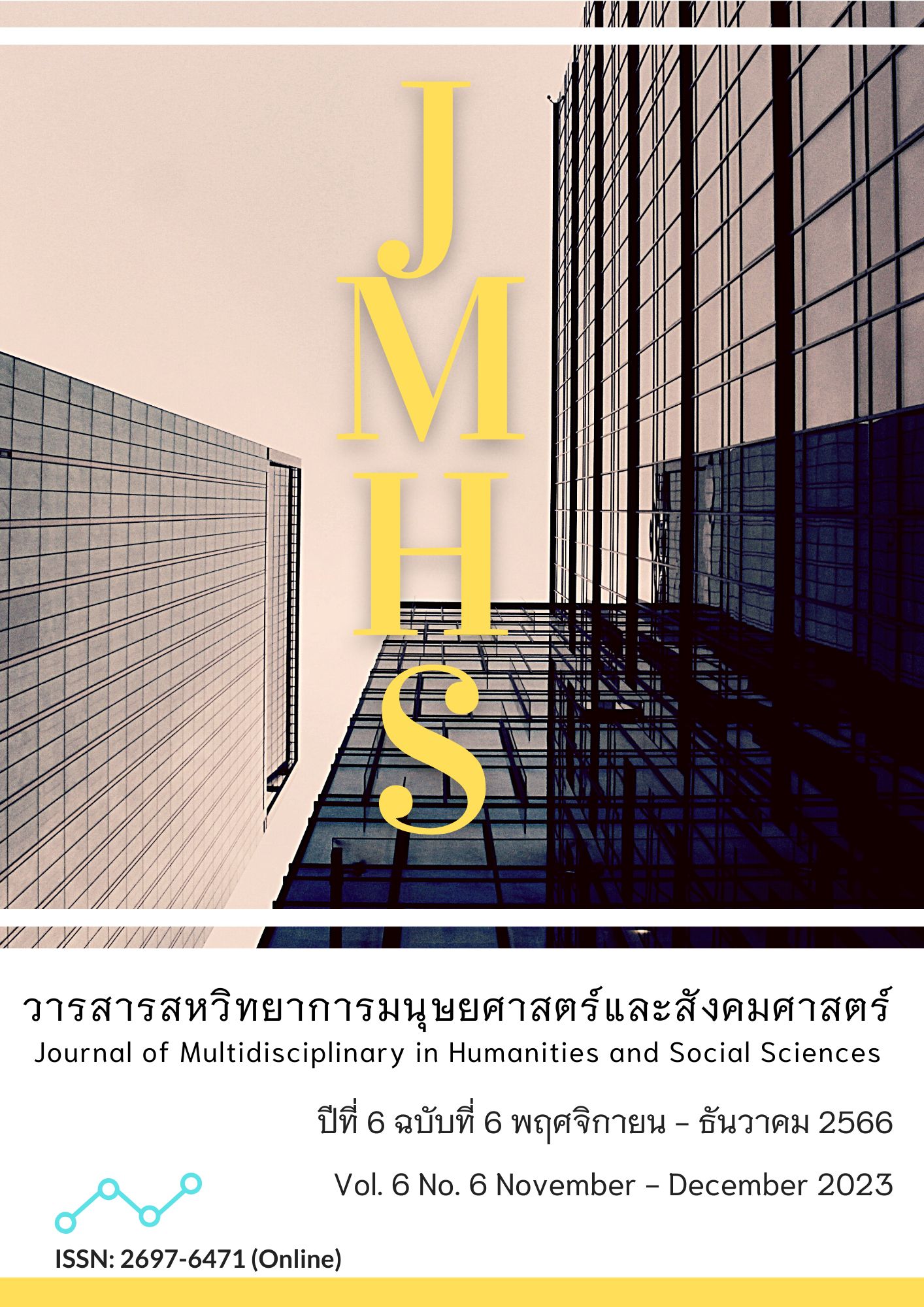Results of Using Tactile Activity Calendar to Reduce Prompting on Toilet Behavior of a Child with Deafblindness
Main Article Content
Abstract
This article had the objective of studying the effect of using a tactile activity calendar to reduce the prompting to go to the toilet behavior of a child with congenital deafblindness. The research design is experimental research. The case study was of a 12-year-old girl with congenital deafblindness, diagnosed by a physician. The three research instruments were: 1) an assessment form for selecting tactile symbol cards that show the meaning of going to the toilet; 2) an individualized teaching plan (IIP); and 3) teacher behavior and a case study. Data analysis was done with frequency, percentage mode, and content analysis.
The research results were found as follows: 1. A case study based on the meaning of entry toilet: 10 steps to be used as a 10-step sequence of activity calendar correctly. 2. A case study passed the criteria of 4 levels and a mode score of 4 out of 1-3 for teaching individual teaching plans. 1) could tell the meaning of tactile symbol cards 2) place the tactile symbol in the sequence of the activity calendar in all 10 steps, and 3) use the tactile activity calendar correctly.
Article Details

This work is licensed under a Creative Commons Attribution-NonCommercial-NoDerivatives 4.0 International License.
Views and opinions appearing in the Journal it is the responsibility of the author of the article, and does not constitute the view and responsibility of the editorial team.
References
ทิศนา แขมมณี. (2551). ศาสตร์การสอน: องค์ความรู้เพื่อการจัดกระบวนการเรียนรู้ที่มีประสิทธิภาพ. กรุงเทพฯ: จุฬาลงกรณ์มหาวิทยาลัย.
ประกาศกระทรวงศึกษาธิการ เรื่อง กำหนดประเภทและหลักเกณฑ์ของคนพิการทางการศึกษา พ.ศ. 2552. (2552, 8 มิถุนายน). ราชกิจจานุเบกษา, 126(ตอนพิเศษ 80 ง), น. 47.
ไมล์, บี., และ ริจจิโอ, เอ็ม. (2547). ความเข้าใจเกี่ยวกับภาวะหูหนวกตาบอด (Understanding deaf blindness). ใน รัชนีกร ทองสุขดี (ผู้แปลและเรียบเรียง), บทสนทนาที่ไม่ธรรมดา: คำแนะนำในการพัฒนาการสนทนาที่มีความหมายกับเด็กและผู้ใหญ่ตอนต้นที่มีภาวะหูหนวกตาบอด (น. 20-37). เชียงใหม่: คณะศึกษาศาสตร์ มหาวิทยาลัยเชียงใหม่.
ยุวดี วิริยางกรู, ภทรา นาพนัง, และ วนิดา สินเบญจพงศ์. (2561). การจัดการพฤติกรรมสำหรับครูการศึกษาพิเศษ. เชียงใหม่: ลีโอมีเดียดีไซน์.
สมเกตุ อุทธโยธา. (2560). การพัฒนารูปแบบการจัดการเรียนรวมสำหรับเด็กที่มีความต้องการพิเศษ ตามแนวทางการเรียนรู้ในศตวรรษที่ 21 โดยใช้วิธีการนิเทศแบบพี่เลี้ยง ของเครือข่ายความร่วมมือขององค์กรในชุมชนในจังหวัดเชียงใหม่. วารสารวิจัยทางการศึกษา คณะศึกษาศาสตร์ มหาวิทยาลัยศรีนครินทรวิโรฒ, 12(1), 226-240.
สำนักบริหารงานการศึกษาพิเศษ สำนักงานคณะกรรมการการศึกษาขึ้นพื้นฐาน กระทรวงศึกษาธิการ. (2563). คู่มือการจัดทำแผนการจัดการศึกษาเฉพาะบุคคล (Individualized Education Program: IEP). สืบค้นจาก https://pubhtml5.com/rqbh/rtcv/basic/
อัชรา เอิบสุขสิริ. (2557). จิตวิทยาสำหรับครู. (พิมพ์ครั้งที่ 2). กรุงเทพฯ: จุฬาลงกรณ์มหาวิทยาลัย.
Adatto, D. (2015). Behavior management vs. Behavior modification. Retrieved from www.tesidea.com/blog/behavior-management-vs-behavior-modification/
Blaha, R., & Rudin, D. (1981). Teaching time concepts through the use of concrete calendars. Unpublished. Texas School for the Blind and Visually Impaired. Retrieved from https://www.tsbvi.edu/let-me-check-my-calendar
Bronfenbrenner, U. (1979). The ecology of human development: Experiments by nature and design. Cambridge, MA: Harvard University.
Lihui, Z. (1993). The development the concept of calendar time. United States: University of Illinois
at Urbana-Champaign.
Miles, B., & Riggio, M. (1999). Remarkable conversation: A guide to developing meaningful communication with children and young adults who are deafblind. Watertown, MA: Perkins School for the Blind.
Rowland, C., & Schweigert, P. (1989). Tangible symbols: Symbolic communication for individuals with multisensory impairments. AAC: Augmentative and Alternative Communication, 5(4), 226-234. Retrieved from https://doi.org/10.1080/07434618912331275276
Thorndike, E. L. (1923). Education a first book. New York: The Macmillan Company.
Yoshinaga-Itano, C., & Apuzzo, M.-R. L. (1998). Identification of hearing loss after age 18 months is not early enough. American Annals of the Deaf, 143(5), 380-387. https://doi.org/10.1353/aad.2012.0151


